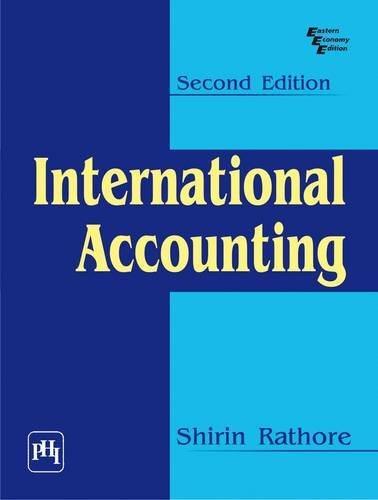Question
The Equitee Corporation was incorporated on January 2, 2019, with two classes of share capital: an unlimited number of common shares and $3 cumulative non-voting
The Equitee Corporation was incorporated on January 2, 2019, with two classes of share capital: an unlimited number of common shares and $3 cumulative non-voting preferred shares with an authorized limit of 50,000.
During the first year of operations, the following transactions occurred:
- 1. The company issued 3,000 preferred shares for a total of $75,000 cash, and 10,000 common shares for $20 per share.
- 2. It issued 4,000 common shares in exchange for a parcel of land with an estimated fair market value of $120,000.
- 3. The company had sales of $1,050,000 and incurred operating expenses of $925,000 during the year.
-
4. No dividends were declared during the first year of operations.
During the second year of operations, the following transactions occurred:
- 5. In November, the company's board of directors declared cash dividends sufficient to pay a dividend of $4 on each common share. The dividends were payable on December 14. (Hint: Remember that no dividends can be paid on the common shares until the dividends in arrears and the current dividends on the preferred shares are paid.)
- 6. In December, the cash dividends from November were paid.
- 7. In December, the board of directors declared and distributed a 10% stock dividend on the common shares. The estimated market value of the common shares at the time was $24 per share.
- 8. The company had sales of $1,200,000 and incurred $1,025,000 in operating expenses during the second year.
Required
a. Prepare journal entries to record the above transactions, including closing entries for net income and dividends declared in transactions 3, 5, 7, and 8.
b. Use a spreadsheet or table format like the one in Exhibit 11.10 (Chapter End Review Problem 11-4) to track the changes in all of the shareholders' equity accounts over the two-year period. Prepare the shareholders' equity section of the statement of financial position at the end of the second year.
c. Why would the owners have designated the preferred shares as non-voting?
Step by Step Solution
There are 3 Steps involved in it
Step: 1

Get Instant Access to Expert-Tailored Solutions
See step-by-step solutions with expert insights and AI powered tools for academic success
Step: 2

Step: 3

Ace Your Homework with AI
Get the answers you need in no time with our AI-driven, step-by-step assistance
Get Started


